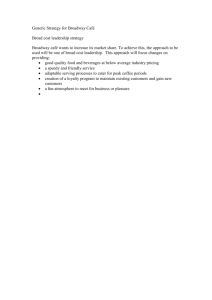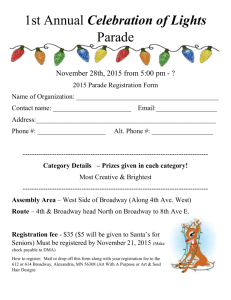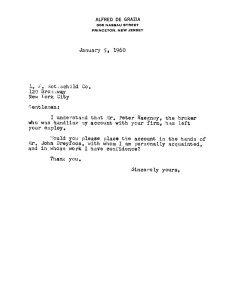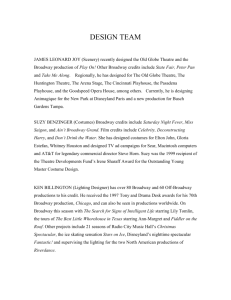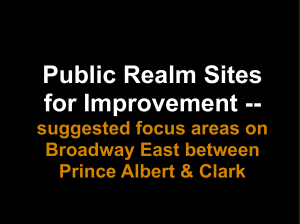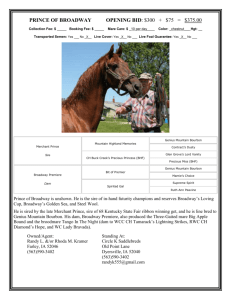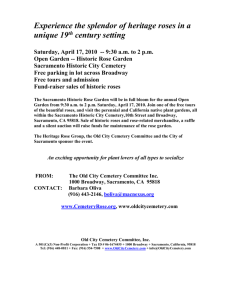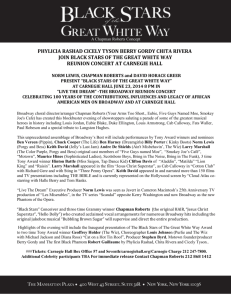Broadway Timeline - Capital Public Radio
advertisement
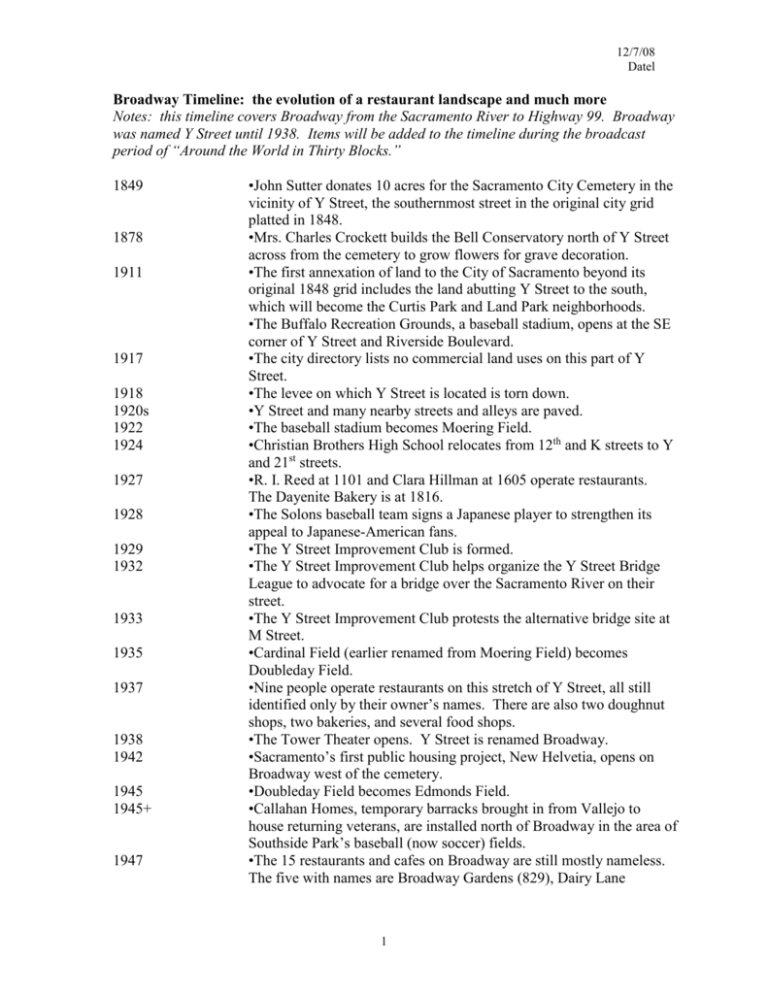
12/7/08 Datel Broadway Timeline: the evolution of a restaurant landscape and much more Notes: this timeline covers Broadway from the Sacramento River to Highway 99. Broadway was named Y Street until 1938. Items will be added to the timeline during the broadcast period of “Around the World in Thirty Blocks.” 1849 1878 1911 1917 1918 1920s 1922 1924 1927 1928 1929 1932 1933 1935 1937 1938 1942 1945 1945+ 1947 •John Sutter donates 10 acres for the Sacramento City Cemetery in the vicinity of Y Street, the southernmost street in the original city grid platted in 1848. •Mrs. Charles Crockett builds the Bell Conservatory north of Y Street across from the cemetery to grow flowers for grave decoration. •The first annexation of land to the City of Sacramento beyond its original 1848 grid includes the land abutting Y Street to the south, which will become the Curtis Park and Land Park neighborhoods. •The Buffalo Recreation Grounds, a baseball stadium, opens at the SE corner of Y Street and Riverside Boulevard. •The city directory lists no commercial land uses on this part of Y Street. •The levee on which Y Street is located is torn down. •Y Street and many nearby streets and alleys are paved. •The baseball stadium becomes Moering Field. •Christian Brothers High School relocates from 12th and K streets to Y and 21st streets. •R. I. Reed at 1101 and Clara Hillman at 1605 operate restaurants. The Dayenite Bakery is at 1816. •The Solons baseball team signs a Japanese player to strengthen its appeal to Japanese-American fans. •The Y Street Improvement Club is formed. •The Y Street Improvement Club helps organize the Y Street Bridge League to advocate for a bridge over the Sacramento River on their street. •The Y Street Improvement Club protests the alternative bridge site at M Street. •Cardinal Field (earlier renamed from Moering Field) becomes Doubleday Field. •Nine people operate restaurants on this stretch of Y Street, all still identified only by their owner’s names. There are also two doughnut shops, two bakeries, and several food shops. •The Tower Theater opens. Y Street is renamed Broadway. •Sacramento’s first public housing project, New Helvetia, opens on Broadway west of the cemetery. •Doubleday Field becomes Edmonds Field. •Callahan Homes, temporary barracks brought in from Vallejo to house returning veterans, are installed north of Broadway in the area of Southside Park’s baseball (now soccer) fields. •The 15 restaurants and cafes on Broadway are still mostly nameless. The five with names are Broadway Gardens (829), Dairy Lane 1 12/7/08 Datel 1948 1949 1950 1955 1957 1959 1960 1961 1964 1965 1967 1968 1972 1975 1976 1990 Fountain (1628), Hoyt’s Doughnut Shop (1816), Club Twenty-Six Café and Liquors (2530), and Ding How Café (2721). Edmonds Field burns down. •Broadway is widened, necessitating the removal of the historic entryway to the cemetery. •Edmonds Field, rebuilt in concrete, re-opens. •Bell Conservatory is torn down and replaced by a supermarket. •By now the 18 restaurants, cafes, and drive-ins all have names. In this era of American’s love affair with the car, there are four drive-ins: Fehr’s Drive-In (501), Tastee Freeze (801), Harvey’s Self-Service Drive-In (1211), and Foster’s Freeze (2731). There are three Chinese restaurants. Joe Marty’s El Chico Bar and Restaurant (1500) and Sam’s Original Ranch Wagon (1817), which will become local favorites, are here. •The California Highway Patrol occupies its new headquarters just south of Broadway (2490 1st Avenue). This is the first of several State of California office buildings to be built on or near Broadway, providing local restaurants with lunchtime customers. •The California Department of Motor Vehicles (2540 24th Street) occupies a big, modern box in the same complex as the Highway Patrol. Today, it is likely the second most recognizable structure in the Broadway vicinity, after the Tower Theater. •The Sacramento Solons baseball team leaves town. •The Hong Kong Café (501) moves from 320 L Street to Broadway. •The baseball field is torn down and Broadway’s only big box retailer, a Gemco Department Store (2505 Riverside), lands there. •Christian Brothers High School, built 41 years earlier, is torn down and Bishop Monogue High School for girls replaces it. •Drive-in convenience and Chinese food remain popular. The first representative of the national fast food chains has appeared: Taco Bell (2431). •The nearby W-X Freeway opens. •The dominant ethnic cuisine on Broadway remains Chinese, although Puerto Vallarta Mexican Food (2700) has opened. •Pancake Circus has arrived. •Sam’s Original Ranch Wagon has morphed into the China Wagon (1827). •Bishop Monogue High School building is leased by the State of California as part of the DMV complex. 2
